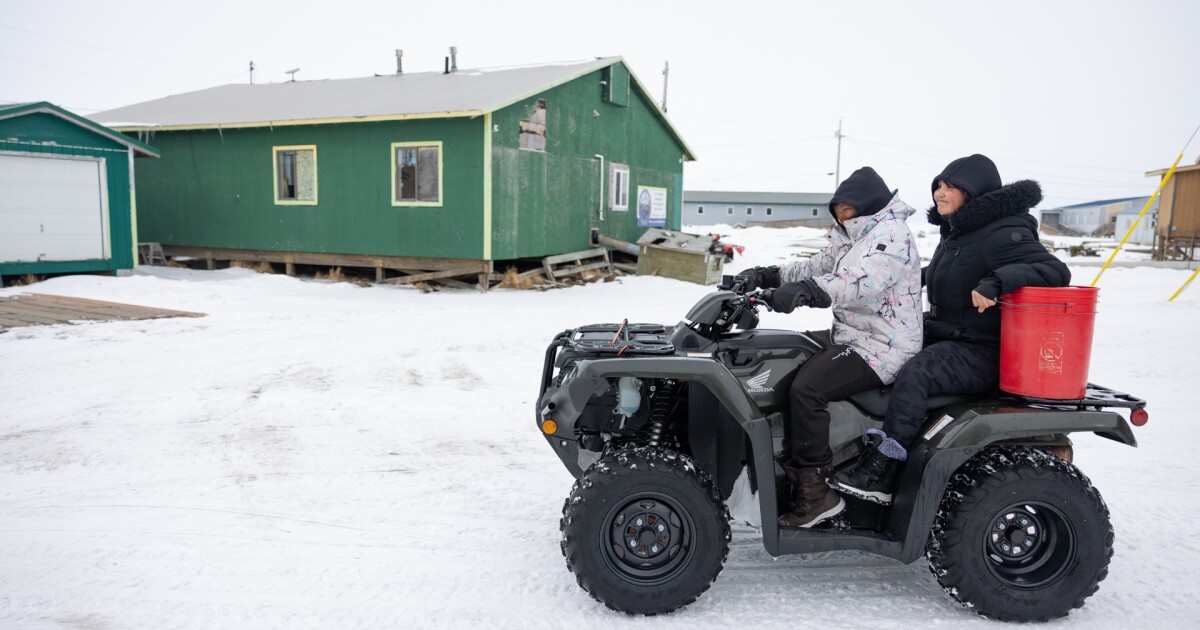One morning, Stephanie Alexie woke to find her home in Nunapitchuk, Alaska, surrounded by deep water. “It looked like the ocean,” she recalled. Nearby houses were like islands, floating on shimmering pools. Until help arrived in a boat, she and her children were stranded in their Yup’ik village of about 550 people.
Alexie’s home never flooded like this before. In recent years, the climate in the Yukon-Kuskokwim Delta has shifted dramatically. Every spring, when the ice breaks and the thaw begins, Alexie often feels trapped on an island. The floods of May 2020 were the worst the village had faced, and not only did the water rise perilously close to her foundation, but it also rotted the insulation beneath her floors, leading to mold in her kitchen. Burdened by overcrowding, with 26 people sharing four bedrooms, she worried about where her family would go if their home became unlivable.
Alaska is home to 40% of the country’s federally recognized tribes, and many face a common threat: the state is warming two to three times faster than the global average. A 2024 report from the Alaska Native Tribal Health Consortium found that 144 tribes are battling erosion, flooding, and permafrost degradation. In Nunapitchuk, the 2020 floods made several homes uninhabitable, forcing families to crowd into already packed households. Moving to Bethel, a larger city nearby, could offer more housing, but it would distance families from their traditional way of life.
Residents have taken drastic measures to adapt, from relocating homes to sharing more cramped conditions. “We just have to live through it, even without help,” Alexie said.
The Role of History
Before settlers arrived in the late 19th century, Indigenous peoples in this region led semi-nomadic lives, migrating according to seasons for hunting and fishing. This mobility helped them cope with environmental changes. But as settlers moved in, tribes were pushed into permanent villages near new schools, which were positioned without regard to the land’s suitability, often placing homes on unstable ground.
The 1960s oil boom led to rapid housing construction that disregarded traditional knowledge about building resilience in extreme climates. Many homes were built quickly and carelessly, modeled after designs suitable for temperate climates. As a result, many of these houses are now deteriorating, creating a housing crisis that worsens with every flood.
Ryan Tinsley, a construction expert based in Fairbanks, points out that many of these homes are now being labeled as "sick homes" due to the mold and health issues stemming from poor construction. For example, children in the Yukon-Kuskokwim Delta experience hospitalization rates for respiratory diseases up to seven times the national average.
The Current Crisis
In 2022, Typhoon Merbok struck Western Alaska, damaging 40 communities. As flooding becomes more frequent, the infrastructure struggles to keep up. Simon Lawrence from Kwethluk shared that what was once a safe place for children to play has transformed into a risk zone due to erosion. Local officials are vying for federal help to move homes away from the encroaching riverbanks, but funding is scarce.
Brian Wilson with the Alaska Coalition on Housing and Homelessness warns that the increasing cost of maintaining homes amid changing climate conditions is unsustainable. “The reality of their climate is changing faster than anyone expected 20 years ago,” he said.
Efforts to build new homes have been stalled by budgets that can barely cover existing structures. Marking time, some villages in the Bering Straits region need hundreds of new homes, but only a fraction can be built each year. The harsh environment and logistical challenges compounded by global warming make construction even more difficult.
In times like these, many communities feel abandoned in funding competitions, competing against each other for limited federal resources. Genevieve Rock from Shaktoolik believes that the lack of a centralized federal agency dedicated to these issues complicates matters further. “We’re not getting the help we need,” she said.
With local knowledge and modern building methods, coupled with the means to address climate hazards appropriately, these communities could pioneer effective, sustainable housing solutions. But without those resources, the future remains uncertain.






















